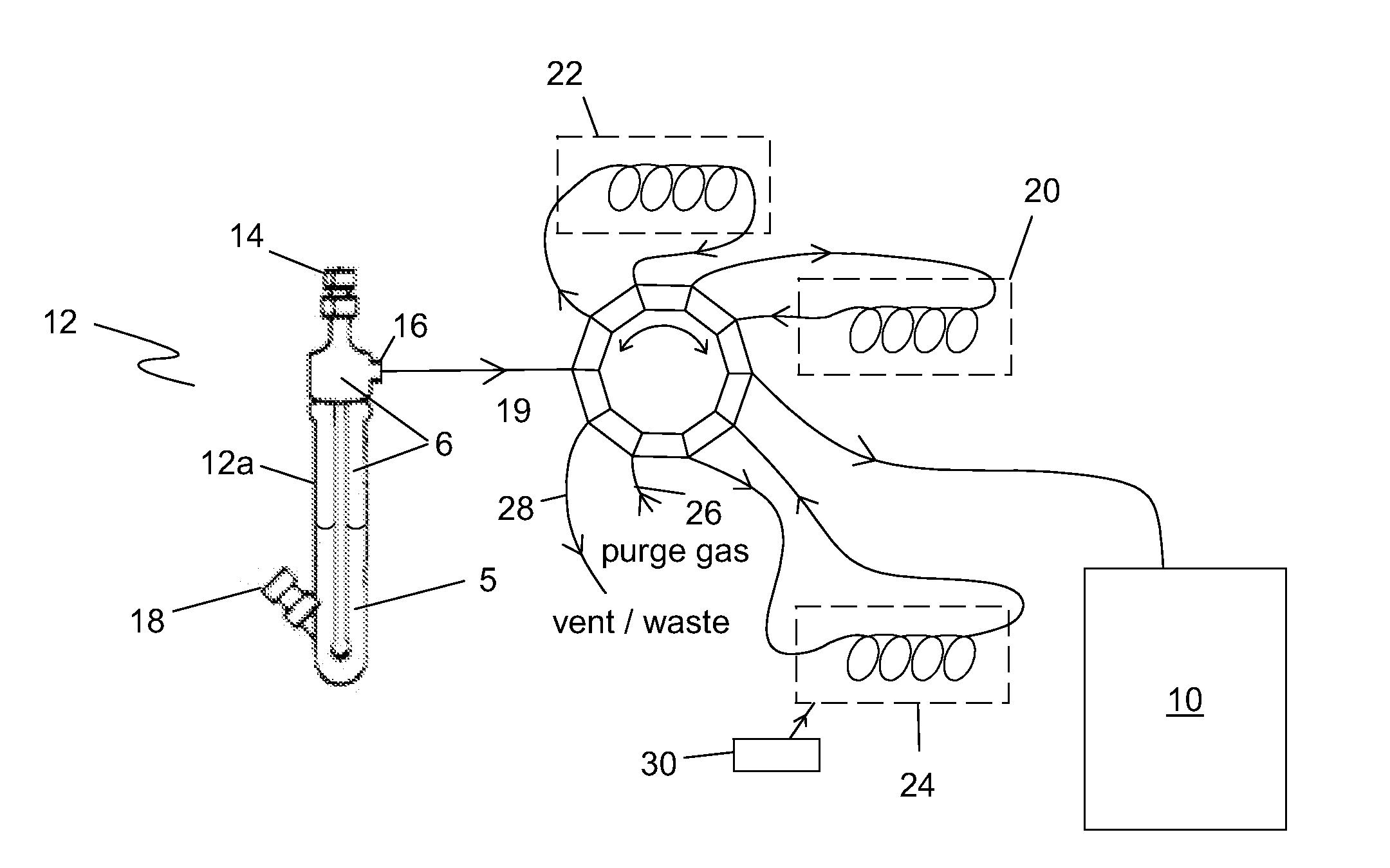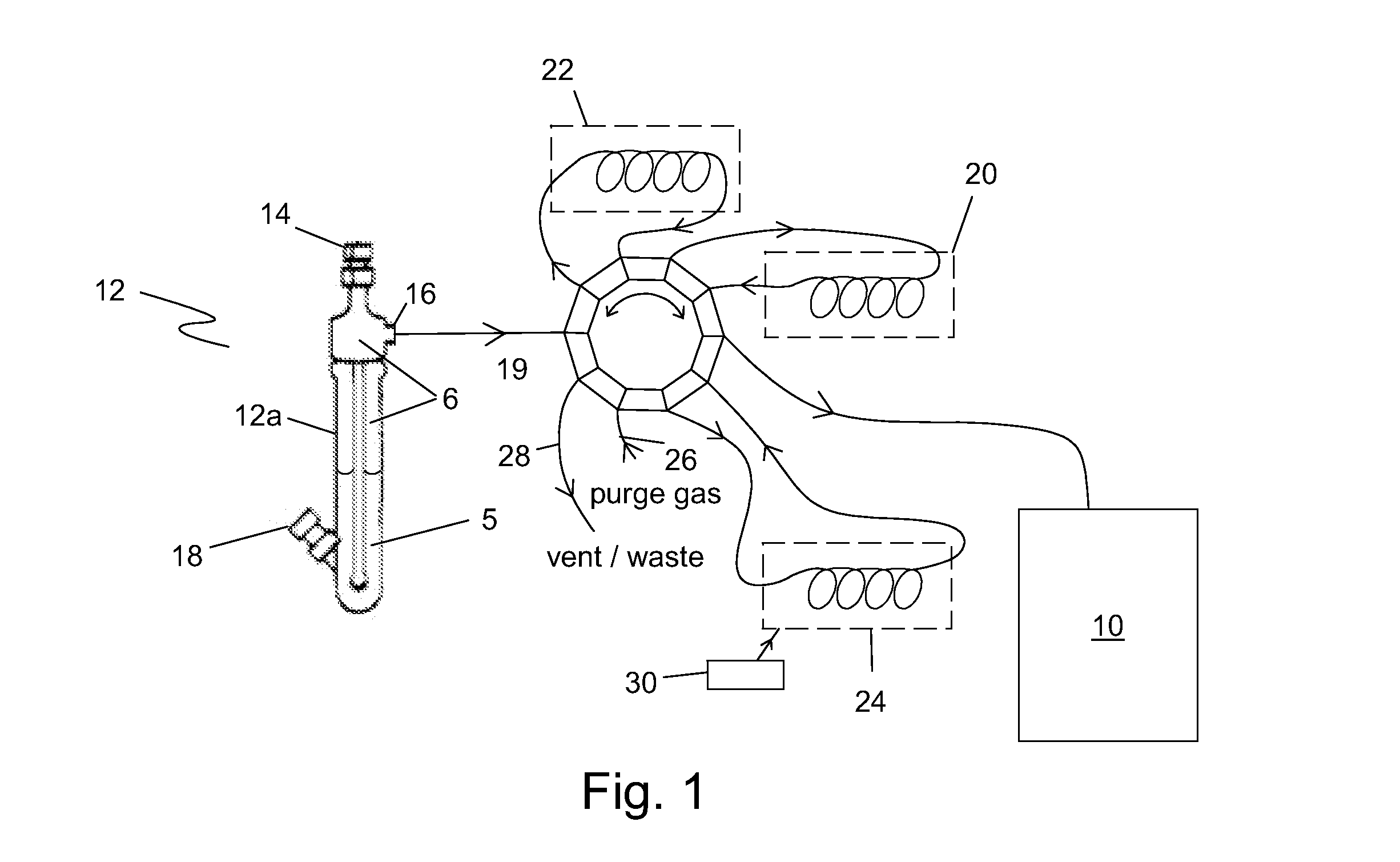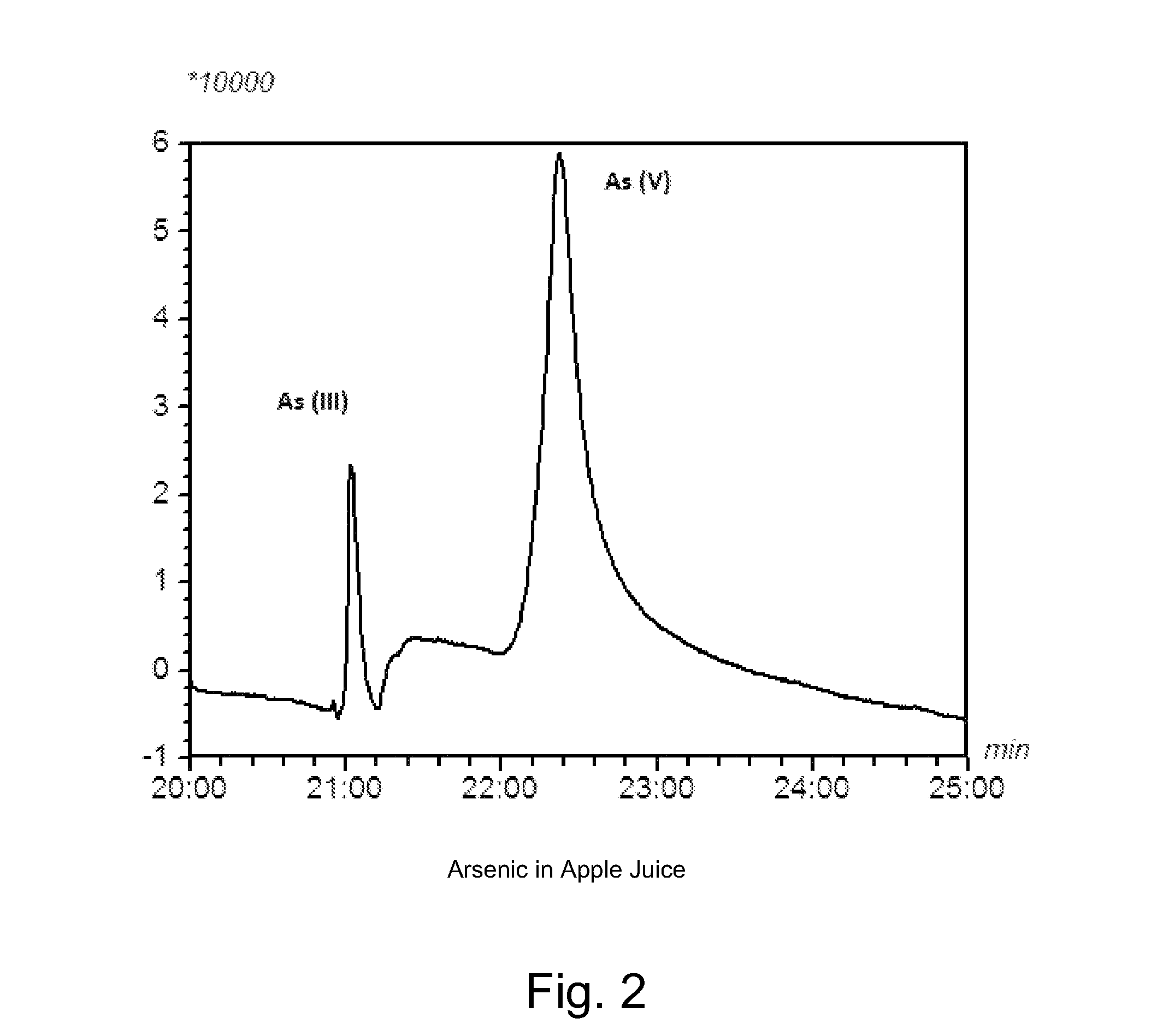Method for ion detection
a technology of ionization and detection method, which is applied in the field of detection of species ionized by radiant energy, can solve the problems of the formation of positively charged ions and the temporary loss of electrons in the molecules, and achieve the effects of low capital cost, low cost of use, and no high level of training
- Summary
- Abstract
- Description
- Claims
- Application Information
AI Technical Summary
Benefits of technology
Problems solved by technology
Method used
Image
Examples
Embodiment Construction
Definitions
[0057]A “precolumn” means a six inch (15.24 cm) length of a column packed with a porous polymer or a short thick film capillary column. An example of an acceptable porous polymer is the porous polymer sold under the trademark HayeSep® N.
[0058]An “oxygen-retaining column” means a packed column or a PLOT column or a capillary column of sufficient length where the retention time of oxygen in the column is longer than the retention time for an ionizable chemical gas species.
[0059]An “ionizable chemical gas species” means an ionizable gas hydride substrate of the chemical species or an ionizable gas of a chemical element of the chemical species.
[0060]Conventional wisdom of those of ordinary skill in the art is that the PID detector is used for hydrocarbon detection. Other techniques are typically used for transition metals, post-transition metals and metalloids. The most popular techniques that are typically used include hydride generation with atomic absorption spectrometry (...
PUM
 Login to View More
Login to View More Abstract
Description
Claims
Application Information
 Login to View More
Login to View More - R&D
- Intellectual Property
- Life Sciences
- Materials
- Tech Scout
- Unparalleled Data Quality
- Higher Quality Content
- 60% Fewer Hallucinations
Browse by: Latest US Patents, China's latest patents, Technical Efficacy Thesaurus, Application Domain, Technology Topic, Popular Technical Reports.
© 2025 PatSnap. All rights reserved.Legal|Privacy policy|Modern Slavery Act Transparency Statement|Sitemap|About US| Contact US: help@patsnap.com



